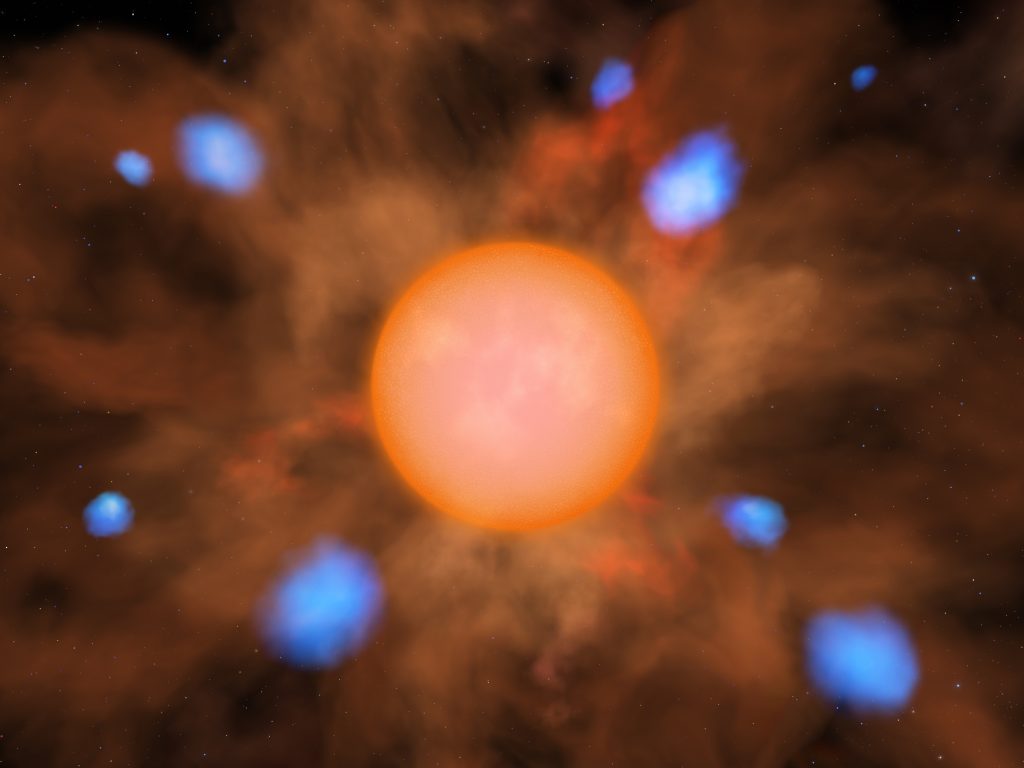Data taken by the Stratospheric Observatory for Infrared Astronomy shows radiation from water vapor within envelopes of gas that rotate around distant stars, allowing astronomers to determine the abundance of water vapor in the chemical composition of stellar outflows.

When molecules in astronomical objects are in a high-energy state, being hit with incoming light may cause them to emit radiation – a phenomenon known as a maser. In particular, water masers – which are masers emitted from water molecules – are often found in regions of space where new stars are being born. The Stratospheric Observatory for Infrared Astronomy, or SOFIA, observed two of these masers and contributed to estimating the amount of water vapor around the stars.
SOFIA found water masers being emitted from the stars Mira and R Crateris, both red giants a few hundred lightyears away. Though these are not the first water masers that have been identified, only a handful has been detected at the high frequency probed by SOFIA.
To enable this detection, researchers used SOFIA’s GREAT instrument – the German REceiver for Astronomy at Terahertz Frequencies – to detect the outflowing radiation from the two stars. They supplemented this data with observations from two ground-based telescopes, the Effelsberg radio telescope in Germany and the Atacama Pathfinder Experiment, or APEX, telescope in Chile. Together, the three instruments allowed the authors to observe water maser transitions over a large span of wavelengths, from about 0.0002 meters to about 0.0136 meters.
Using this wide range of detected wavelengths, they were able to update and test a model for estimating the relationship between the radiation emitted and the amount of water vapor present around a star’s surface. Each wavelength detected corresponds to a different transition energy, which is characteristic of the radiating material. Thus, detecting specific wavelengths associated with water transitions allowed the scientists to use the refined model to derive the total amount of water vapor present around Mira and R Crateris, and place a constraint on their water abundance.
A comparison between the observed radiation and the model’s predictions indicates that water vapor and carbon monoxide are the primary sources of oxygen in stellar outflows. SOFIA’s role in these observations can help astronomers advance their knowledge of the chemical composition of stellar outflows and further improve their models of water masers to better describe their behavior.
